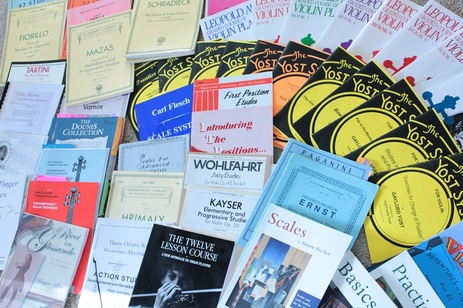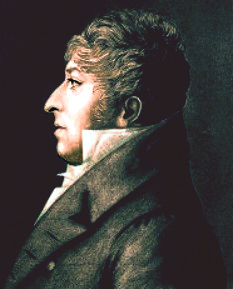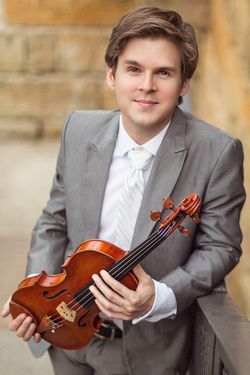 My collection. I couldn't find the DONT and Sevcik, unfortunately.
My collection. I couldn't find the DONT and Sevcik, unfortunately. Are there too many etudes? You'd think that after 10-20lbs of these, violin mastery would be well within reach. Regarding the etudes studied in my formative years: I can't even remember what most of them sounded like or why they were assigned. I do remember faking through most of Kreutzer, wondering what all those bowings were for and why Galamian's name was on the cover. I remember being berated for not practicing them enough from ages 8-15. But mostly, it's a blur.
Now, I love studying and teaching Kreutzer's Etudes. I understand how useful, structured, and well composed they are. When the time comes, I really try to hype them up:
"Congratulations! It's time to become a scholar of Kreutzer's 42 Etudes! Heifetz called these special studies the 'Professional's Guide to Violin Playing.' These studies are short pieces that serve as a workshop for tackling some of the most challenging problems of violin playing. Nearly every great violinist has studied Kreutzer at some point - see Itzhak Perlman, Joshua Bell, Anne Akiko Meyers, Hilary Hahn? They studied Kreutzer #2! And so can you. With Kreutzer, we can perfect the Art of Practicing, build a dazzling left hand technique, and begin to build an expressive mastery of the bow!"
But sometimes, just as I start to think I've made a successful pitch, these thoughts flash through the student's mind:
"Oh, so I'm playing number #2 first. That sounds exciting... What happened to #1? Do you know what you're doing? Wait, is that the same dude that wrote Praeludium and Allegro? No. Oh... looks like a lot of boring 16th notes. Yawn."
The problem:
It's difficult to get students actively engaged in etude practice. Students get used to learning a series of notes for next week's lesson, or for seating tests. They start to think that mindlessly walking through tasks and following instructions is what violin playing is all about. The endless stream of numbered etudes and exercises starts to seem both esoteric and insurmountable. "LA, LA, LA. Tell me what to do. This looks like busy-work." Students might even grow to like the simplicity of that structure of domination. After all, they've already become accustomed to standardized testing and one-size-fits-all letter grades at school. Why should music lessons be any different? I know that for many of my lessons as a teenager, I just wanted to follow directions. It was easy and safe. There was no need to ask questions or think for myself. I grew to like being a cog. It wasn't until I started my collegiate studies at Eastman that I was miraculously able to grow out of that tragic mindset of mindlessness.
I think it's quite possible that a cabal of disgruntled, jaded violinists got together in the 1800's and decided that etude practice should be a supremely punishing experience that cements a traumatic, unhealthy bond between teachers, students, and parents, similar to Stockholm Syndrome. Some etudes seem entirely divorced from expressive, thoughtful music making. Generally, there's no accompaniment part. There's very little guidance in terms of written instruction or diagrams. The question of why is never thoroughly and simply answered in writing. Also, the naming of etudes is reprehensible. Almost without exception, etudes are numbered, not named. If we were talking about chapters in a book, that would be different, but most etudes are stand-alone entities.
Inmates get numbers. Cats get names. And most people prefer branded Cheerios to generic toasted "0s." Imagine if Shakespeare had preferred the ease of numbers over painstakingly choosing the right words.
If music be the #3 or #4, play on,
Give me #15-22; that surfeiting,
The appetite may sicken, and so #42.
A few of the most famous, well-loved etudes do have names, or have acquired names over time. Paganini's Caprice #13, has acquired the title "Devil's Laughter," due to the chromatic descending 3rds at it's opening. The theme of Ernst's "The Last Rose of Summer" is based on a song of the same name. Widely considered one of the most difficult virtuosic pieces, the other Ernst studies (given only numbers) are sometimes more challenging and interesting.
Changing the dominator perspective, immediately:
Private violin instruction is almost always one-on-one, or one-on-one with a parental observer. There are few teaching relationships that are this close. It's a privilege for both teacher and student. It's more possible in this dyad to activate a student's imagination and critical thinking skills than it is in any large classroom setting. There's nowhere to hide. Every week, progress and lack of progress is on display.
One place to begin, is to convert the poor naming of etudes into an exercise in imaginative and critical thought. For instance, Teacher and Scholar can work collaboratively to come up with names for the Kreutzer etudes.
Preliminary: What do you think the challenges of this etude are? What looks difficult to you? Okay, some unfamiliar shifting and string crossings. Also, look at this part over here. Let's talk about the purpose of this study.
Okay, now some easy questions about the music. No wrong answers are possible here.
1) Does is sound happy or sad? Neither? Really? It sounds nostalgic? Okay...
2) Is it a song or a dance? A song? what kind of song? A love song, a lullaby, a power ballad?
A Dance? With one person, or more? Around a fire? In poofy dresses?
3) If it were accompaniment to a cartoon, to a movie, or to a novel, what would be happening?
Is it a sword fight, a ghost rising from a lake? No? It's thousands clones being unloaded from ships in the Star Wars universe. Okay. Let's go with that.
This may seem time consuming, but at least the young scholar is being led to ultimately commit to a basic interpretation. In his masterclass DVD, Maxim Vengerov views Kreisler's Tambourin Chinois through the lens of a wild bicycle ride through a busy street. It may seem odd to overlay an additional narrative onto a piece of music, but at least it's a way to address the spirit of the work as a whole, rather than relate isolated information about this harmony or that. Scholars will at least begin to unravel it's emotional content and rhetoric. They'll start to find a sense of purpose, discovery, an enjoyment in etude study. The relationship between technique and conception will start to develop. The etude will begin to take form as an expressive and meaningful tool. They'll begin to play the etude, not suffer through it.
Here's a set of new titles (below) for Kreutzer's famous 42 Studies, as an example.
| New Titles for Kreutzer's 42 Studies. Don't like the new titles? Come up with your own scheme and post it here. Wouldn't it be great if young scholars of Kreutzer could have this exchange with their teachers: I don't like that name. I think it should be called: _______________ . Critical thinking, imagination, self-initiation. A meaningful dialogue in lessons can start here. |
| Foundation Studies: 1 Lament 2 Initiation 3 Mountain 4 Woodpecker 5 Pirouette 6 Rivets 7 Pogo Stick 8 Gigue Brilliante 9 Elysian Fields 10 Flying Trapeze 11 Lullaby 12 Task of Sisyphus 13 Prelude, in the style of Bach 14 Weaving Trill and Action Studies: 15 Modern Times 16 Procession 17 Mimes 18 Playground 19 Tickling 20 Fluttering Wings 21 Street Organ, Monkey optional 22 Fat Cat | Extended Studies: 23 Flower Smelling Fantasia 24 Whirling Dervishes 25 Gusts 26 Hiccups 27 Lunging 28 Storm Scene 29 Kneeding 30 Demonic Fiddle 31 Tybalt's Death The 10 Dreaded Double Stop Studies: 32 Meditation 33 A Close Embrace 34 Carousel 35 Victory March 36 Faerie Dance 37 Troll Dance 38 Love Birds 39 In Sherwood Forest 40 Trembling Heart Strings 41 Labyrinth 42 Kitsune - Fox Spirits |
This post influenced significantly by:
Teaching Critical Thinking, Bell Hooks
How to Study Kreutzer, Benjamin Cutter:
TedTalk: A Manifesto for Play, for Bulgaria and Beyond
TedTalk: Feats of Memory Anyone Can Do
TedTalk: Math Class Without Hand Calculation


 RSS Feed
RSS Feed